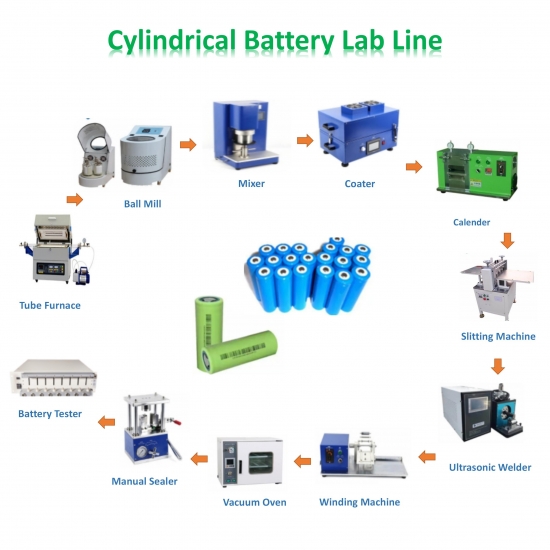Exploring the Future of Energy: Cylindrical Cell Research
In the rapidly evolving world of energy storage, cylindrical cells have emerged as a cornerstone technology, particularly in the domains of electric vehicles (EVs), portable electronics, and renewable energy storage systems. Their robust design, scalability, and proven performance have made them a preferred choice for researchers and manufacturers alike. This blog delves into the latest advancements in Cylindrical Cell manufacturing, exploring their design, applications, and the future potential they hold.
What are Cylindrical Cells?
Cylindrical cells are a type of lithium-ion battery characterized by their cylindrical shape, which is typically denoted by a numeric code indicating their dimensions (e.g., 18650, 21700). The format is well-known for its durability, high energy density, and ease of manufacturing, which has led to widespread adoption in various applications.
Key Components and Design
Cylindrical cells consist of several critical components:
Anode: Usually made of graphite, the anode stores lithium ions during the charging process.
Cathode: Commonly composed of lithium cobalt oxide (LCO), lithium manganese oxide (LMO), or nickel manganese cobalt (NMC) oxides, the cathode releases lithium ions during discharge.
Electrolyte: A lithium salt solution in an organic solvent facilitates the movement of lithium ions between the anode and cathode.
Separator: A microporous membrane that prevents physical contact between the anode and cathode while allowing ionic flow.
Recent Research and Advancements
Enhanced Energy Density
One of the primary focuses of recent research is increasing the energy density of cylindrical cells. Higher energy density translates to longer battery life and more powerful performance. Innovations in electrode materials, such as the use of silicon anodes and high-nickel cathodes, have shown significant promise in boosting energy density while maintaining stability and safety.
Fast Charging Capabilities
With the growing demand for fast-charging solutions, researchers are developing new electrolytes and electrode materials that can support rapid charging without compromising battery life. Advances in solid-state electrolytes and advanced thermal management systems are key areas of exploration.
Safety Improvements
Safety remains a top priority in battery research. Cylindrical cells are being designed with improved thermal stability and advanced safety mechanisms to prevent overheating and short circuits. The development of non-flammable electrolytes and advanced battery management systems (BMS) are critical steps toward safer cylindrical cell batteries.
Cost Reduction
Reducing the cost of cylindrical cells is essential for their widespread adoption. Researchers are exploring cost-effective materials and manufacturing processes, such as scalable coating techniques and automated assembly lines, to make cylindrical cells more affordable without sacrificing performance.
Applications of Cylindrical Cells
Electric Vehicles (EVs)
Cylindrical cells are extensively used in electric vehicles due to their high energy density and reliable performance. The Tesla Model S, for example, utilizes thousands of 18650 cells in its battery pack. The recent shift towards larger formats like the 21700 cells offers even greater energy capacity and efficiency, making EVs more affordable and extending their range.
Portable Electronics
From laptops to smartphones, cylindrical cells power a wide array of portable electronic devices. Their compact size and high energy output make them ideal for applications where space and weight are critical considerations.
Renewable Energy Storage
As the world transitions to renewable energy sources, the need for efficient energy storage solutions becomes paramount. Cylindrical cells are increasingly being used in grid storage systems to store energy generated from solar panels and wind turbines, ensuring a steady and reliable power supply.
Challenges and Future Outlook
Recycling and Sustainability
The environmental impact of battery disposal is a growing concern. Researchers are focusing on developing recycling processes to recover valuable materials from used batteries and reduce waste. Additionally, efforts are being made to design batteries with longer lifespans and greater recyclability.
Advanced Material Research
The future of cylindrical cells lies in the discovery and application of new materials. Research into lithium-sulfur and lithium-air batteries, which promise significantly higher energy densities, is ongoing. These technologies could revolutionize the energy storage industry if successfully commercialized.
Integration with Smart Technologies
The integration of cylindrical cells with smart technologies, such as the Internet of Things (IoT) and artificial intelligence (AI), is an exciting frontier. Smart BMS can optimize charging and discharging cycles, predict maintenance needs, and enhance overall battery performance and lifespan.
Conclusion
Cylindrical cell research is at the forefront of the energy storage revolution, driving advancements that promise to enhance the performance, safety, and affordability of batteries. As research continues to push the boundaries of what is possible, cylindrical cells will play a pivotal role in shaping the future of energy storage, powering everything from electric vehicles to renewable energy systems. The journey ahead is filled with challenges, but the potential rewards are immense, heralding a new era of sustainable and efficient energy solutions.



 ONLINE
ONLINE Louis@lithmachine.com
Louis@lithmachine.com +0086 15959378975
+0086 15959378975